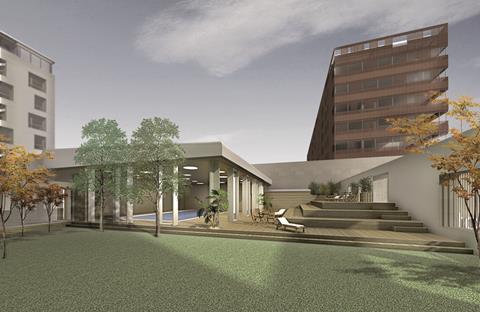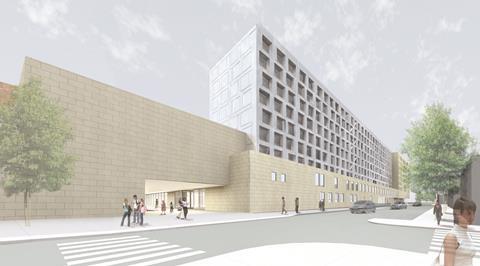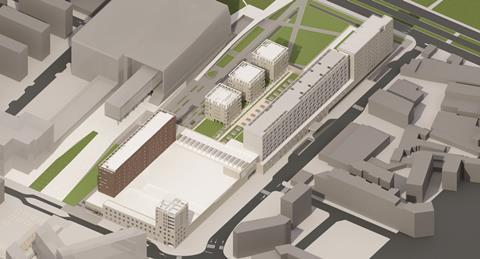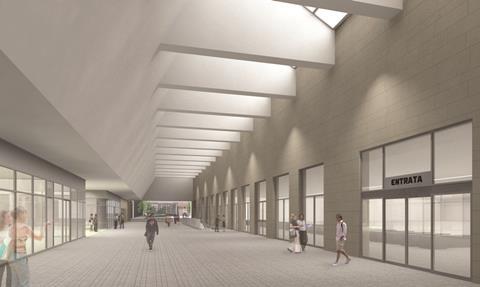Milan has ambitious plans to deliver a zero carbon mixed-use scheme in which no home will need a domestic boiler - all by harnessing the geothermal potential of its underground network of canals

Milan in northern Italy is a city synonymous with fashion, but it also has an unlikely topographical secret. The city is dissected by a network of underground canals and rivers, the latter of which flow down from the Alps to the north of the city before surfacing to its south. The canals, or navigli, were dug as far back as the 15th century primarily for trade and commercial purposes. However most are now unnavigable and the underground sections have fallen into an advanced state of dereliction and decline. Apart from one.
The Martesana is set to find itself at the centre of one of Milan’s most ambitious geothermal energy projects. The £240m Porta Vittoria development is the final major segment in the ongoing regeneration of central Milan. Built on the site of a disused railway station, the 55,866m2 mixed-use development will have 10 two to nine-storey buildings containing residential, commercial, hotel, retail and leisure accommodation.
Located 3km from Milan city centre, construction began in 2009 and is expected to finish in 2014. The Martenesa flows directly under Porta Vittoria and the designers plan to utilise geothermal energy from the underground waterway to heat and cool the buildings, entirely eliminate the use of domestic boilers throughout the scheme’s 100 flats and deliver a virtually zero-carbon emissions scheme.
The geothermal installation system has been designed by heating, ventilation and air conditioning (HVAC) manufacturer Climaveneta, which describes the project as one of the “largest geothermal systems” in the city. Geothermal installations are not uncommon in Milan and Gigi Marazzi, HVAC designer at Climaveneta, explains why. “The favourable ground water conditions, almost unlimited water availability and it being very easy to reach - only 15m below ground level - makes geothermal very convenient and profitable in Milan.”

Additionally, the temperature of these Milanese underground water sources tends to maintain a constant level of about 15°C through the year, an optimum temperature that requires relatively minimal adjustment for either heating or cooling. However, despite this abundant natural resource in the city, the extensive utilisation of geothermal technology on a development this size within Milan remains relatively rare.
The geothermal system at Porto Vittorio will work in conjunction with other renewable energy sources, all selected and configured to maximise the development’s environmental efficiency and reduce its energy consumption. Solar energy will be provided by a large photovoltaic installation and high-efficiency electrical heat pumps will be equipped with total heat recovery systems to enable the development to use renewable energy from the groundwater for heating and cooling.
The geothermal source can be used only when needed and only to supply a fraction of the power required, bringing a higher efficiency rate
Giuseppe Medeghini, Climeventa
Giuseppe Medeghini, also a HVAC designer at Climaveneta, explains the system accordingly: “The buildings are served by four-pipe synergistic hot and cold water production systems. The heat pump units are equipped with a heat recovery system so that part of the heat required from the end user is obtained for free from the waste heat coming from the chilling cycle. In this way the geothermal source can be used only when needed and only to supply a fraction of the power required, bringing a higher efficiency rate to the whole system.”
The system will also provide hot water for all the residential units at Porto Vittoria, eliminating the requirement for domestic boilers. Not only will this reduce energy consumption, but also running costs for the development, all of which will identify the scheme as a more attractive economic as well as environmental investment.
Within Milan, the proximity of the subterranean water course has led to historic problems with the structural integrity of basements and foundations. The city has relatively few deep-level basements, and multi-level underground occupation for parking or services remains rare. Marazzi also identifies the “necessity to plan for pumping stations” within underground developments to avoid problems connected with moisture or flooding.

Nonetheless, as Medeghini points out, deployed in conjunction with other renewable energy sources, the benefits of geothermal technology can be enormous. “When air temperature is favourable, air source units provide for most of the load, preventing the costs caused by the geothermal pumping systems. In peak seasons, water source provides unbeatable efficiency. Such a refined approach, combined with additional sources (photovoltaic, solar thermal) and operated properly, results in custom-made projects delivering very high energy reduction and accelerated payback.”
So could geothermal technology make an impact on the scale of Porto Vittoria closer to home? Climaveneta is convinced it can and is exploring the potential application of similar geothermal technology at various sites in London. London, too, is home to its own network of subterranean rivers with historic tributaries like the Fleet, Tyburn, Walbrook and Westbourne now hidden from view but forever immortalised by the eponymous streets and neighbourhoods they have given their names to. If the geothermal potential of London and other UK cities could be unlocked by the same combination of ambition and sophistication Climaveneta’s technology has realised at Porto Vittorio, then the impact on our own environmental infrastructure could be enormous.

A future for microgeneration?

Industry experts from Arup, Solarcentury, Micropower Council and Aecom debate the issues at Ecobuild on Wednesday 6 March 2013 at 13.45. For more programme information go to www.ecobuild.co.uk
To register for Ecobuild go to www.ecobuild.co.uk/register




























No comments yet